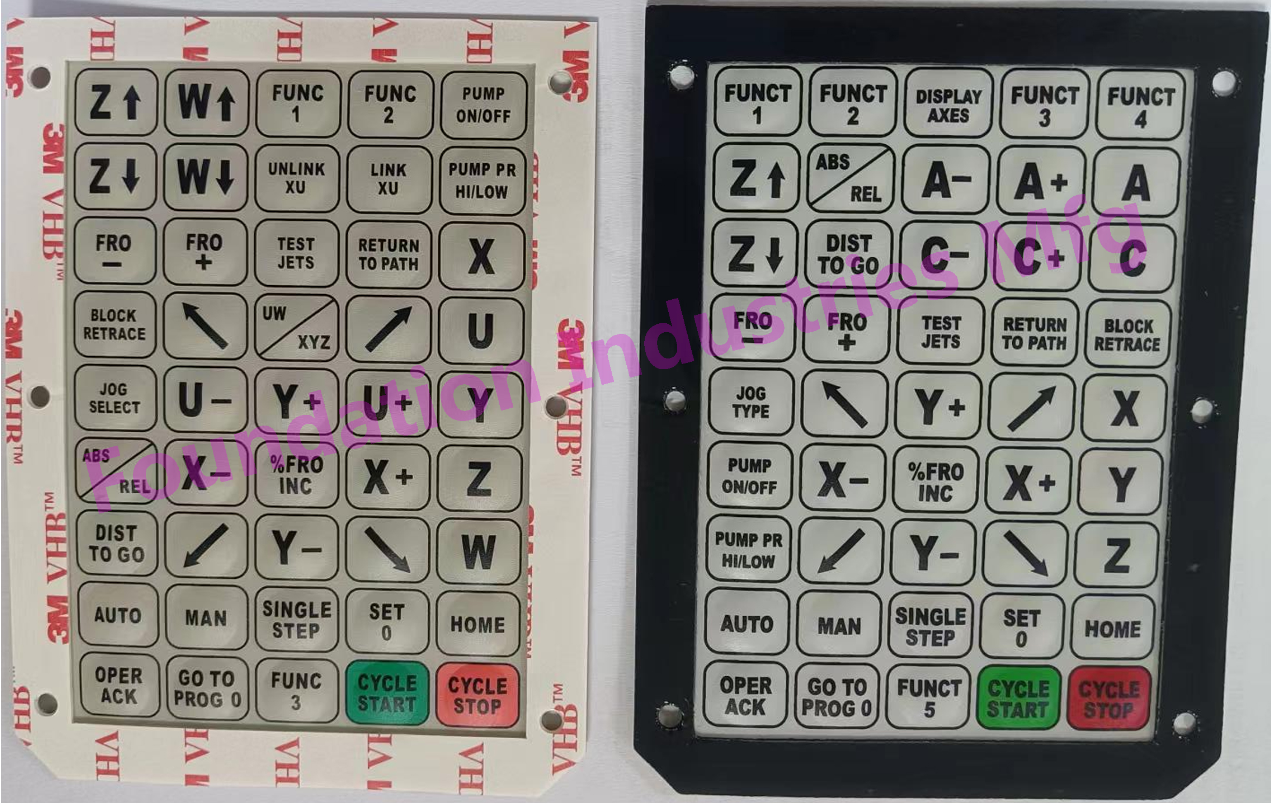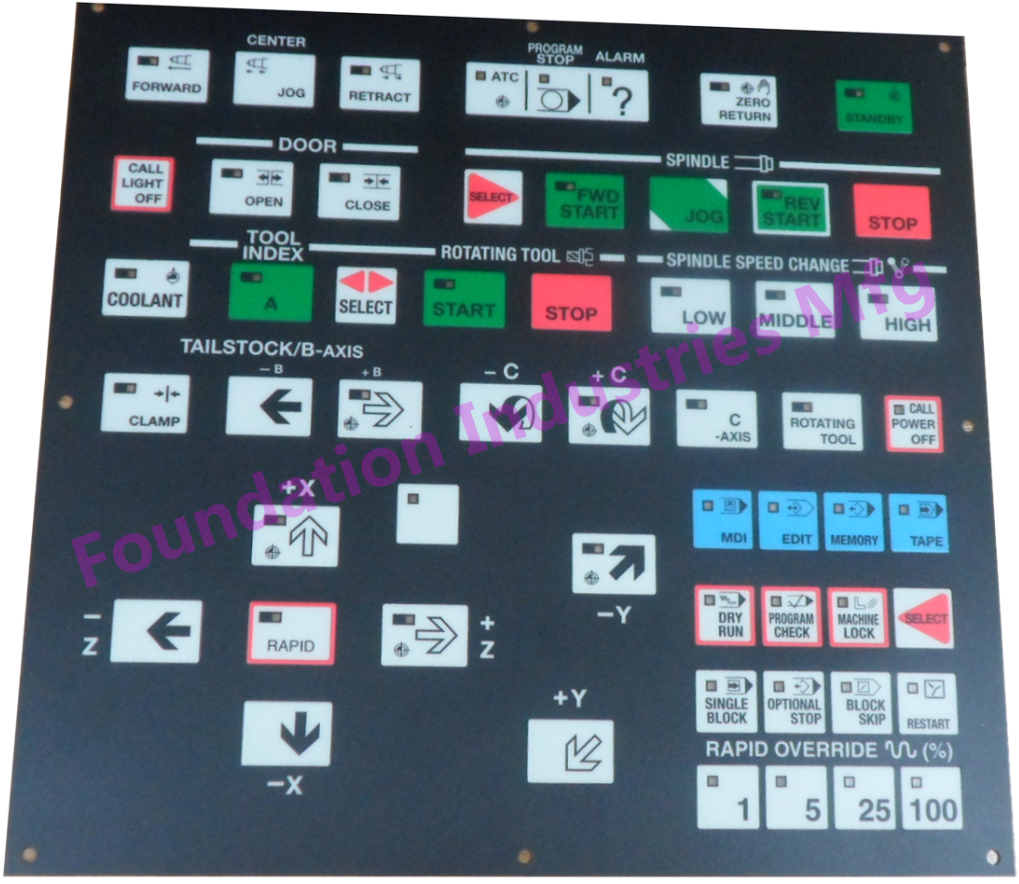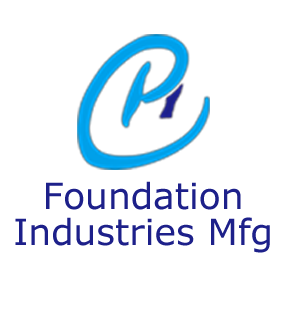What's the graphic overlay
The graphic overlay is a soft panel processed with a very thin film (PVC / PC / PET) with a certain functional character indication. It is waterproof, dust-proof, friction-resistant and colorfast, and is widely used in household appliances, communication equipment, instrumentation, industrial control and other fields.
The printing process of the graphic overlay should be divided into front side and back site printing, respectively used in different materials and types of graphic overlay. It can be divided into flat type and hook face type.
The flat graphic overlay is the simplest type of panel, mainly with different colors of text, lines, color blocks to indicate or distinguish the various functional parts, users can according to their own needs to choose different film materials and double-sided adhesive.
The hook face type graphic overlay is a kind of beautiful and practical panel newly developed on the basis of the flat graphic overlay. The manufacturing process of the hook face is pressed by a heated pressing mould, and the key part is slightly raised to form a three-dimensional key after being hot pressed. The three-dimensional key can not only accurately determine the range of the key body, improve the identification speed, make the operator's tactile more sensitive, but also enhance the appearance of the decorative effect of the product.
What conditions should the graphic overlay have?
The membrane overlay is the color ink screen printing to the transparent polymer backside, once the screen printing is completed and cut into shape, this layer becomes the color mask layer. The graphic overlay is the component of the membrane switch, it can clearly show the function of the switch, display color, mask type and the operation position of the switches, and it can also play a protective role.
As the graphic overlay of the membrane switch, it is mainly responsible for the decoration and protection of the appearance of the product, so the membrane overlay used for making the panel should at least have the following conditions:
1. A good appearance: Refers to the production of panel film surface smooth, consistent gloss, no mechanical damage, scratches, inclusions and stains and other surface defects.
2. A good weather ability: The graphic overlay is the surface layer of the membrane switch exposed in the natural environment, the panel material should be able to under certain natural environmental conditions, without deformation, cracking, aging and discoloration.
3. A good chemical resistance: the graphic overlay will work at different chemicals environments, and for most common chemicals, such as alcohols, ethers, mineral oils should have a certain tolerance.
4. Good dimensional stability: the graphic overlay can be work well at temperature range (generally -40 °C ~ 55 °C) , and the size no significant change.
5. Elastic requirements: The graphic need to be a very little soft, At the same time, the elastic deformation to just a little, and it can be judged by the elongation of the material, generally speaking, the elongation is large, elastic deformation is also large, and the elastic performance is poor. According to the above requirements, the film commonly used in panels are usually polycarbonate (PC), polyvinyl chloride (PE), polyester and polyurethane films.
How to choose the graphic overlay material?
According to the raw material type , there usually be divided into PC, PVC, PET three raw material that used for the graphic overlay; According to its surface state can be divided into sand surface (semi-transparent film) and smooth surface (clear film).
1.The PC material has a good comprehensive index of physical and chemical properties, and it has a wide range of inks. It is the most common material used in membrane switch panel layer. PC material has the distinction of sand surface and smooth surface, the reason to choose sand surface material is because the use of membrane switch is mostly electronic products, As the control system of the graphic overlay do not want to be disturbed by light, and the surface of the sand surface is only diffuse reflection, will not produce bright reflection; At the same time, due to the surface of the disordered sand, with the role of masking scratches, and on the contrary, smooth material does not have the above characteristics. But as a glossy material, once printed on the back, the color will appear more fresh and bright. In the decorative requirements are strong and do not often touch the occasion, often choose the smooth material production panel, or because of some display areas such as LCD displays needs, the choice of smooth material is more favorable.
2. The PET film is used more often as the membrane switch products, it is have a good insulation, rebound, solvent resistance. The surface state of PET film, is generally smooth transparent film, and the sand surface is very thin, similar to a surface layer of desert light, In the PET surface and obtain the desert light surface, it is not like PC by mechanical means by the sand surface roller in the process of mechanical coining, which also determines its surface is not as obvious as PC sand surface. The coated film is mostly supplied by sheet of fixed size, and its price is about 3 ~ 5 times higher than that of sand surface PC.
How to select the thickness of the graphic overlay?
Whether choose the PC, PVC or PET, its thickness always very small.
The graphic overlay as a top surface of the membrane switch, it need to be resilience, Fatigue life, sensitivity and other factors, usually choose to the thickness of 0.175 mm, in this more moderate thickness, the user can according to the characteristics of the product, in the appropriate range according to need and adjustment.
The graphic overlay is too thin, rebound weak, three-dimensional molding is not obvious enough, in the case of a larger area, it is more difficult to maintain the level; The panel layer is too thick, feel slow, operating strength increased.
What thickness of the circuit film should be use?
As the circuit layer of the thin membrane switch, considering the separation of the switch contacts, rebound and the reliability of the lead wire to the connector plug or riveting, the thickness of circuit material should be chosen between 0.075 mm and 0.18 mm. Too thin rebound weakness, the separation of the contact is not agile, too thick, slow action, increase the strength of the operation. Per the actually situation, the choice of film thickness and the following factors.
- (1) the keys size
The keys is larger, such as the diagonal length or the diameter of the circular key is more than 12 mm when the 0.1 mm thick film is selected. The thin film is slightly thicker, the rebound is strong, and the film relaxation tendency is small after the keys is pressed several times, thus ensuring the normal work of the contacts.
- (2) the thickness of the isolation layer
When the isolation layer is thinner, the thickness of the circuit substrate film should be thick, too thin film prone to contact self-contacts.
- (3) the shape of the keys
The flat membrane switch design use of a slightly thicker film, and the film used in the circuit contact bubble should generally use 0.125mm thick film, Only when the diameter of the embossing is large and the chord height of the dome is small, the thicker film is suitable.
What are the most important considerations in the design of graphic overlay?
Each individual color (including the background color) requires a different screen printing operation. The color ink is printed on the lower surface of the photosensitive material. Each operation requires color sorting, ink blending, screen preparation, and separate preparation and registration. Therefore, the colors of the switch also has a certain impact on the price.
(1) Original drawings and signs can be scanned by high-definition scanners. High-quality, high-contrast "original drawings" can reduce time.
(2) The original drawings provided by the customer are helpful to the designers of the manufacturer. The manufacturer can adjust the ink color according to the customer's requirements and the color label to ensure the quality and efficiency.
(3) mask drawings in the line to be clear and coherent, otherwise it will bring great difficulties to screen printing.

About Overlay Window
What is a overlay window?
The graphic overlay window is a transparent or translucent area on the panel to facilitate the user to observe the display of the LEDs or LCD display behind the panel.
The options for the window are as follow design:
(1) Transparent window: The raw material transparent window.
(2) The filter window: The area that has translucent ink printed, color is red, green,black or yellow, in order to distinguish the color of LEDs or the LCD displays.
(3) Opaque windows: Areas printed with multiple layers of background colors that are not visible unless the lights behind them glow, used to indicate legends and graphics.
Note: The print window: The bottom layer of the window is rough and the surface is printed with special ink to form a transparent area for LCD or LED displays.
What are the advantages?
(1) In the high-brightness environment, the use of a variety of coatings of the window can enhance the clarity of the display.
(2) The use of this window to avoid opening in the panel, so as not to affect the appearance of packaging and panel.
(3) The rough surface can be conducive to lighting diffuse reflection and increase visibility.
What are the important design considerations?
(1) Due to the addition of printing coating, the use of windows usually increases the panel cost.
(2) LCD display window for a clear, non-reflective or smooth window.
(3) LED display window is clear or filter window, this window should have no reflection.
(4) the monitor should be arranged behind the window, near the window to increase the definition.
(5) special window coating with anti-scratch characteristics.
About Overlay Surface Structure
What is the surface structure?
The surface structure is the surface coating (actual or standard) on the front of the panel. There are several kinds of the structure. The following are four more commonly used kinds:
(1) Sand surface: Rough
(2) Smooth surface: Brighter
(3) Surface reflection printing: Reduce the bright surface reflection light
(4) Surface gloss printing: Coating smooth, shiny
Note: The alternative surface structure is a method of mixing different coatings on ordinary panel surfaces.
What are the advantages?
(1) Rough structures can hidden finger prints and even scratches.
(2) Increase the visual ability, and improve the positioning ability of finger keys.
(3) The non-reflective surface can improve the readability of the panel and display by reducing the reflected light.
(4) Coating can optimize the performance of the display window
What are the important design considerations?
(1) The use of coatings will increase costs.
(2) Polyester and polycarbonate may be selectively used for the above four and others.
Related Reading:
Related Products:
Standard Graphic Overlay Supplier


